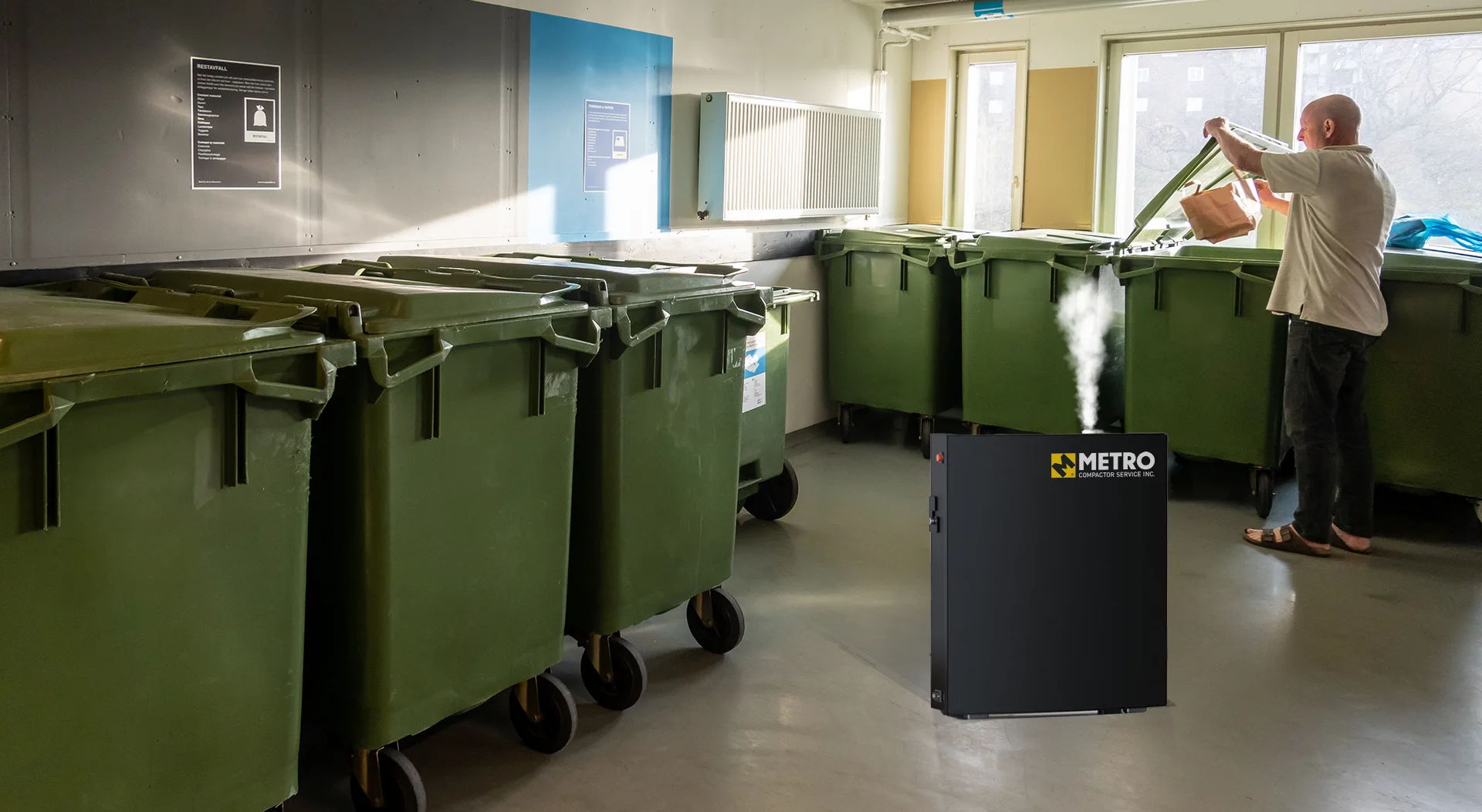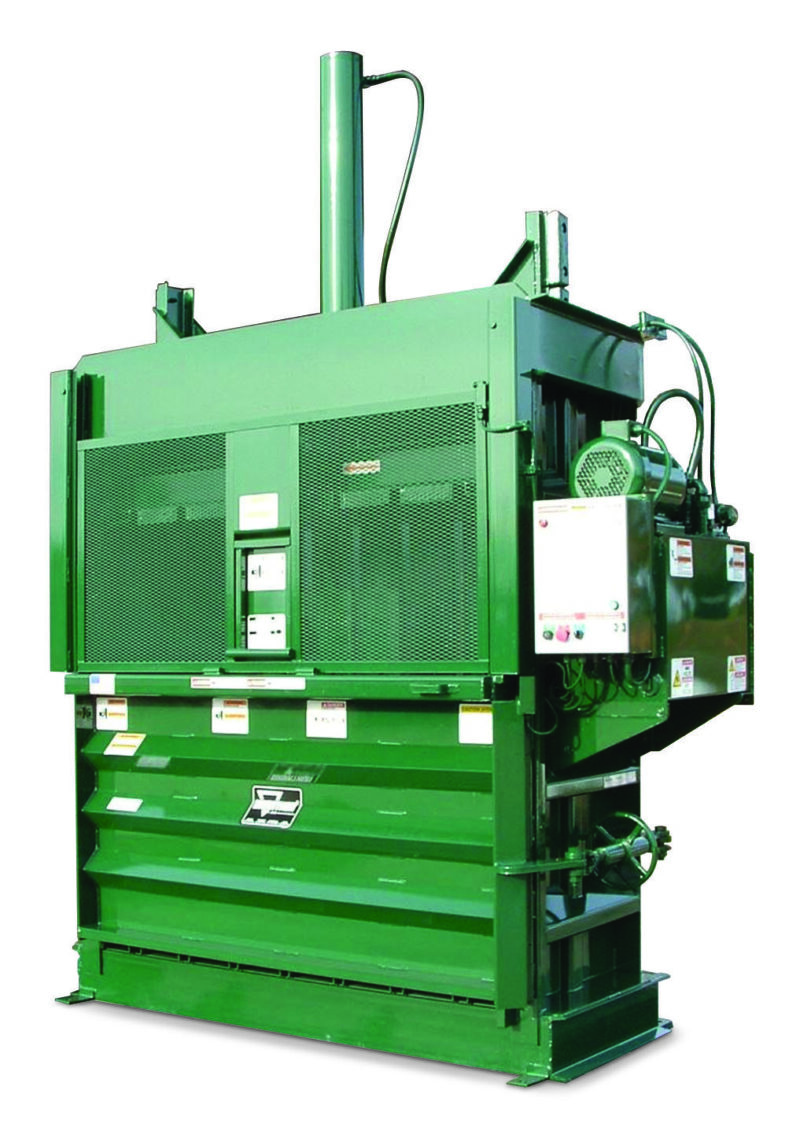Dependable Baler for Rent for Cardboard and Plastic Compression
Dependable Baler for Rent for Cardboard and Plastic Compression
Blog Article
Discovering the Necessary Role of Waste Equipment in Modern Recycling Processes and Sustainable Garbage Disposal Practices
The important function of waste tools in modern-day reusing procedures highlights its importance in achieving lasting waste disposal practices. Advanced systems, such as automated arranging technologies and compactors, not just improve efficiency however additionally play a critical duty in reducing contamination prices and improving material healing. As the demand for more sustainable solutions grows, it is vital to examine how these technologies adjust to developing obstacles within waste administration. What innovative advancements are on the perspective that could further transform these procedures?
Value of Waste Devices
Why is waste devices essential in the reusing procedure? By promoting the splitting up of products, waste tools minimizes contamination, which is vital in ensuring top notch recyclables that can be reestablished right into manufacturing cycles.
Furthermore, waste equipment boosts operational effectiveness and security within reusing facilities. Advanced machinery, such as shredders and balers, permits the rapid handling of huge quantities of waste, minimizing labor costs and processing time. In addition, making use of specialized devices lowers the risk of injury amongst workers by automating unsafe tasks.
Moreover, the ecological impact of recycling is magnified by efficient waste devices. By enhancing the recycling process, facilities can considerably minimize the volume of waste sent out to landfills, thereby adding to sustainability initiatives. Finally, waste tools is not just a secondary component of reusing; it is an essential aspect that drives efficiency, safety and security, and environmental stewardship in modern waste administration techniques.
Sorts Of Waste Tools
The effectiveness of recycling operations is carefully connected to the certain kinds of waste equipment utilized at the same time. baler rental. Different categories of tools are important to the collection, sorting, handling, and transportation of recyclable materials
First of all, collection equipment, such as waste collection vehicles and bins, is crucial for gathering recyclables from different sources, consisting of residential, business, and industrial places. As soon as gathered, arranging equipment, including conveyor belts, shredders, and magnetic separators, plays a crucial duty in distinguishing different product kinds, making sure that contaminants are eliminated prior to processing.
Processing tools, such as balers and compactors, further prepares materials for reusing by pressing and packaging them into workable dimensions. This not just enhances area yet also improves transport efficiency. In addition, specialized equipment like granulators and extruders is made use of for transforming products right into recyclable forms, especially in plastic recycling.

Role in Recycling Procedures
In recycling procedures, the role of waste tools is essential in guaranteeing performance and efficiency at every phase. This devices encompasses a variety of machinery designed to manage, procedure, and sort products that are to be reused. The preliminary stage involves collection and transport, where compactors and balers play a vital duty in optimizing the quantity of products for transit, hence reducing functional costs.
As soon as at the recycling center, shredders and crushers enter play, damaging down materials right into manageable sizes suitable for additional processing. These equipments contribute to enhancing the surface of recyclables, assisting in much more effective product recuperation. Arranging systems, equipped with sophisticated modern technologies such as conveyor belts and optical sensing units, ensure that materials are accurately separated by type, thereby maximizing the quality of the recycled final product.
Furthermore, specific devices for processing certain products-- such as glass, plastics, and metals-- makes sure that each kind is managed in one of the most reliable fashion. On the whole, the integration of advanced waste equipment right into the reusing procedure not just enhances operations however also considerably adds to the general recovery rates of important materials, underscoring its important function in modern recycling efforts.
Influence On Sustainable Practices
Via the efficient operation of waste equipment, reusing procedures substantially improve lasting techniques across various sectors. This effect is realized via raised material recovery prices, which decrease the demand for virgin sources. By enhancing sorting and processing features, progressed waste equipment decreases contamination in recyclable products, thereby boosting the high quality of recycled output. The decrease of waste sent out to garbage dumps is another weblink crucial advantage, as it minimizes environmental degradation and mitigates greenhouse gas exhausts connected with disintegration.

Furthermore, the assimilation of wise modern technologies in waste administration systems permits real-time data monitoring and evaluation, resulting in even more informed decision-making and operational performances. As industries progressively focus on sustainability, the role of waste devices comes to be critical in forming techniques that align with environmental stewardship and governing conformity. Ultimately, the synergy in between waste tools and recycling processes plays an essential role beforehand more comprehensive sustainability goals across neighborhoods and sectors alike.
Future Fads in Waste Administration
Arising trends in waste monitoring are poised to reshape the landscape of reusing and source healing significantly. Among one of the most critical changes is the assimilation of sophisticated technologies such as man-made intelligence, artificial intelligence, and the Net of Things (IoT) These developments promote enhanced arranging processes, boosting the performance and accuracy of reusing procedures. Smart waste containers outfitted with sensing units can check waste degrees in real-time, enhancing collection routes and decreasing operational costs.
In addition, the round economic situation design is gaining traction, advertising the concept of recycling products as opposed to disposing of them. This trend motivates companies to develop items with end-of-life considerations in mind, driving the need for innovative waste monitoring options.
Furthermore, public recognition and engagement in sustainability techniques are on the surge, resulting in raised involvement in reusing programs. Federal government plans are likewise evolving, with stricter laws on waste disposal and motivations for sustainable methods.
As these fads merge, they create a much more reliable, sustainable waste administration system that not just decreases ecological impact yet also promotes financial growth via resource healing and innovation in waste tools. The future of waste management looks appealing, driven by technology and a dedication to sustainability.
Conclusion
In verdict, waste devices plays a crucial function in enhancing the effectiveness and effectiveness of contemporary recycling processes. By lessening contamination and maximizing material recovery, advanced machinery supports sustainable garbage disposal methods and promotes a round economic situation. The unification of clever from this source technologies further optimizes these efforts, making sure liable ecological stewardship. As waste monitoring remains to advance, the significance of innovative waste equipment will remain paramount in attaining sustainability goals and addressing the obstacles of source exhaustion.
Report this page